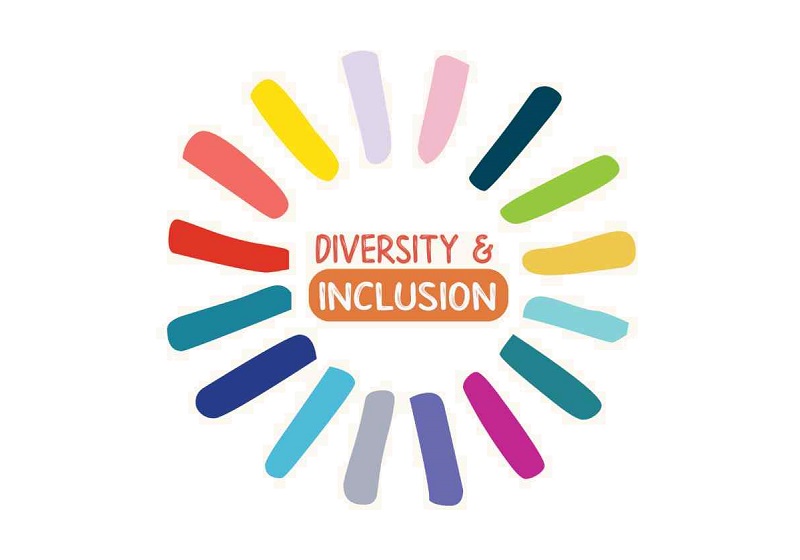Making your event diverse and inclusive is so important. Improving both at virtual, hybrid and live events has been an ongoing goal for event organisers globally.
Instead of just checking diversity boxes, creating an event that features and celebrates all perspectives will result in a more open, creative, and productive space for everyone.
Read on for our key considerations of how to make your event more inclusive and diverse.
Feature diverse speakers
To make your event more diverse, interesting and representative of today’s issues, bring in a variety of experts from different backgrounds and walks of life.
Ban the “manel”. The all-male panel, or “manel”, has become a notorious example of excluding women’s voices. Making this mistake risks being featured on the embarrassing Tumblr page “Congrats, you have an all-male panel!”.
Instead, be sure to include speakers that reflect diversity in terms of gender, race, age, LGBTQ identities, ability, and other underrepresented backgrounds and experiences. You’ll get a much more interesting mix of ideas and opinions at your event, while also making sure your guests identify with the panel without feeling left out.
Use inclusive language and supporting materials
Language is a key component of our ability as humans to connect and learn. It’s critical to use it correctly to create a common understanding and ensure everyone feels welcome to the conversation. A few ways that we can make dialogue more inclusive include:
- Avoid idioms and jargon: often phrases do not translate well to other cultures or have negative historical connotations. For example, “long time no see” has its origins as mocking how Native American used the English language.
- Avoid “gendered” terms: words like “guys”, “middleman” and “chairman” perpetuate the idea that these are male roles. Instead, use words like “colleagues”, “middle person” and “chairperson”. Even opening with “ladies and gentlemen” can exclude trans and nonbinary attendees, so stick to using terms like “everyone”.
- Include all pronouns: offer participants the opportunity to identify their pronouns that include gender neutral options, such as he/him, she/her, they/them. When using pronouns as examples in presentations, alternate genders from “him”, “her” and “they”.
- Offer closed captioning and large fonts: use captions for the hard of hearing and audio captions for the vision impaired.

Be sure to include speakers that reflect diversity in terms of gender, race, age, LGBTQ identities, ability and other underrepresented backgrounds and experiences.

Make accessibility a priority at events
People attending your event will have different needs. Have you thought about if their needs are being met? Think about your audience and who will be attending the event.
See below for things to consider for both virtual and live events:
Virtual event:
- If you are attempting to reach a global audience, consider offering real-time translations to your attendees.
- Your event website, presentation deck and e-communications should be designed using large font size and high contrast to support those with vision complications.
- It is also a good idea to consider technological limitations. Not every attendee will have access to a high-speed internet connection. Provide attendees with options like the ability to download content before (and after) the event, so they aren’t using all their bandwidth on that and missing out on the event itself
Live event:
Although we certainly don’t mean to, sometimes we forget to think about attendees with reduced mobility. It’s a big mistake that can lead to extremely unpleasant situations. That’s why, when scoping out a venue, make sure to walk all the possible routes to different areas, imagining you’re in a wheelchair.
- Are there any ramps outside, and elevators inside?
- Are the bathrooms accessible?
- Will attendee(s) with reduced mobility be able to go from one area to another easily?
- Will they need support, or will they be able to do it by themselves?
- Anything that is handed out at a live event – always a good idea to go paperless
- Registration have wheelchair level access?
- Are catering areas and buffet access set up appropriately?
Offer widespread catering at live events
People are much more aware of what they’re eating these days, so naturally, it’s important to mirror their choices by providing a broad catering selection. Dairy-free, gluten-free, halal, kosher, vegetarian, vegan, nonalcoholic options—all these are must-haves on your menu. And check out our article ‘Sugar: Pure, White and Deadly’ for more about this topic.
Accommodate parents
The responsibilities of breastfeeding and childcare can be a major barrier to attending an event. Nursing parents will feel more welcome if they know they will have a private space where they can pump during the day.
Offering an on-site daycare option would increase attendance, especially of new mothers who are more often the primary caregiver. A nursery could also be a great sponsorship opportunity.

Economical accessibility
When it comes to attending a fee-paying event, there will be varying degrees of economical accessibility. Unfortunately, there are always going to be people who want to attend yet can’t afford to do so. To make your event truly accessible and open to everyone, consider providing a few attendance scholarships for those in need. Establish the criteria people must meet to qualify and promote these opportunities. Speak to your sponsors about this opportunity.
Appeal to social conscious sponsors
One way to signal to your potential attendees that you are serious about creating a more inclusive culture is to partner with sponsors that actively support the equal rights movement. Don’t not be afraid to ask questions of your potential sponsors. Look for companies and brands that share your goals in their day-to-day operations.
Provide a clear code of conduct
A code of conduct establishes community rules and guidelines for your event so attendees know what they are and are not expected to do. Consider publishing a code of conduct that you feel prepared to implement. Having a code of conduct regarding behaviour of attendees and inclusion practices lets your attendees know that they are in a welcoming environment and gives you something to fall back on if need be.
Ask for feedback after your event
Diversity and inclusion are not one-offs, and it will be nearly impossible to get everything right the first time. So, when drafting your post-event survey, include questions that speak to accessibility and inclusivity. The only way to know what worked and what you can improve upon for future virtual events is to ask. Send surveys to all attendees, speakers and presenters, event volunteers, event staff, and the planning committee.
Final thoughts….
Diversity and inclusivity matter whether it’s a face-to-face or virtual event. Providing a well-rounded event takes work and time since there are multiple areas you must cover. It’s 2021 after all, so let’s celebrate and do both! The sense of enjoyment for doing the right thing will be enormous.
One way to signal to potential attendees that you are serious about creating a more inclusive culture is to partner with sponsors that actively support the equal rights movement.


